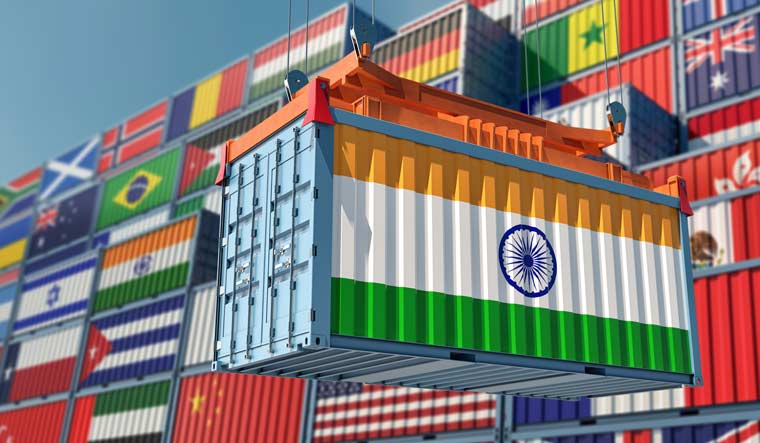Pharma, electronics and engineering goods among India’s top exports during Apr-Oct
India's merchandise exports continued their upward trajectory during April-October, with 21 of the top 30 sectors registering growth in value terms, buoyed by rising global demand for Indian goods.
Growth in key sectors like pharmaceuticals, electronics, and engineering goods contributed to the overall gains, while a sharp decline was reported in traditionally strong sectors—petroleum and gems and jewellery—amid sluggish economic growth in developed markets.
According to data from the ministry of commerce and industry, during April-October, merchandise exports stood at $252.28 billion in value terms, up from $244.51 billion a year-ago.
India’s merchandise exports stood at $39.2 billion in October, a notable rise from $34.58 billion in September, and $33.43 billion a year earlier.
The latest export figures underscore the resilience of India’s export portfolio, even as some sectors grapple with global headwinds.
Some commodities that saw high growth during the period included tea, coffee, tobacco, spices, readymade garments and carpets, handicrafts, and plastic linoleum.
During April-October, sectors that reported an annual fall in growth included cereals, oil meals, oilseeds, marine products, iron ore, ceramic products and glassware, gems and jewellery, and petroleum products.
Key sectors
Engineering goods, with about 25% share in the export basket, grew 9.73% annually in value to $67.49 billion during April-October, according to data from the ministry.
Export of electronic goods rose 23.70% annually to $19.07 billion, while shipments of drugs and pharmaceutical products rose 7.97% to $17.05 billion during the period.
Organic and inorganic chemicals exports rose 7.70% to $16.83 billion, handcraft exports rose 13.9% to $1.05 billion, rice exports grew 5.27% to $6.17 billion, and tobacco exports grew 38.1% to $1.19 billion.
Petroleum exports fell 14.04% annually to $40.94 billion and gems & jewellery exports fell 7.73% to $17.17 billion.
"Petroleum exports dropped by 14%, with European demand tapering due to disruptions in the Red Sea supply routes and elevated production costs, which hindered growth. The diamond and jewellery sector declined by 7.7%, pressured by increased competition from lab-grown diamonds, supply chain constraints due to the Russia-Ukraine war, and diminished demand in the U.S. market," economic think tank Global Trade Research Initiative (GTRI) said in a note.
"With current trends, India’s FY2025 merchandise exports may be around $435 billion. Current trade data underscores a mixed export performance, calling for focused attention on key sectors and markets to navigate emerging challenges and sustain growth," it added.
India’s top 10 merchandise export destinations during April-October were the US, the UAE, the Netherlands, the UK, Singapore, China, Saudi Arabia, Bangladesh, Germany and Australia.
Global challenges
India’s trade dynamics in 2024 bore the brunt of geopolitical tensions and economic disruptions as global events rippled through supply chains and added to costs.
Houthi attacks on ships in the Red Sea drove up freight rates and disrupted critical trade routes, while the prolonged Russia-Ukraine war kept crude oil prices elevated, squeezing margins for importers.
Simultaneously, the European Union’s proposed carbon tax and stringent forest regulations added complexity for exporters targeting the bloc.
Adding to these challenges was a broader slowdown in global economic growth, particularly in developed economies, which weighed heavily on demand for Indian exports. The combined effect of these factors underscored the fragility of international trade in an increasingly volatile world.
In April, the World Trade Organisation (WTO) estimated a recovery in global merchandise trade in 2024, following a weak 2023 marked by inflation and high energy prices.
The WTO expects trade volumes to grow by 2.6% in 2024 and 3.3% in 2025 though geopolitical risks remain.



